NASA Needs A New ‘Giant Leap’ To Replace Its Dead, Dying, And Dated ‘Great Observatories’
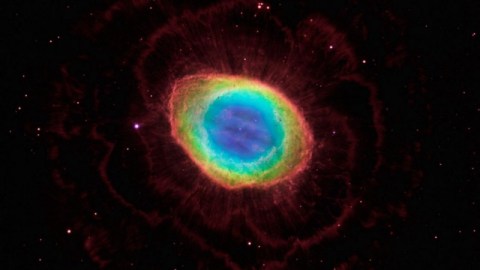
A generation ago, NASA launched their great observatories to explore the Universe. It’s time for round 2.
Throughout the history of astronomy, every advance we’ve ever made has come about because of fundamental improvements in how we view the Universe. What drives how well we understand whatever phenomenon we’re studying? It’s the quality of the data that we collect. No observatory has demonstrated this better than the Hubble Space Telescope, currently celebrating its 30th anniversary, from its perch 550 kilometers above the Earth’s surface.
But Hubble is only the most famous example of NASA’s Great Observatories: a program designed more than 30 years ago to view the Universe as never before. Four different observatories — Hubble (optical), Compton (gamma-rays), Chandra (X-rays), and Spitzer (infrared) — all went to space to view the Universe with different eyes: i.e., in different wavelengths of light. All were spectacular successes, but two are dead and two have reached their limits. Now, in 2020, the world awaits an incredible decision: what comes next? Here’s what NASA is hoping for.

Whenever we look at the Universe as we’ve never looked at it before, there’s always the potential to reveal a revolutionary new set of discoveries. In particular, there are five factors at play that make one observatory superior to another:
- the size of the primary mirror, which increases your light-gathering power (allowing you to see fainter objects) and your resolution (as more wavelengths of light fit across that mirror),
- the wavelength range of your observatory, which reveals various features of the objects you’re observing depending on how you’re looking,
- the energy/spectral resolution of your instruments, which determines how fine you can measure the details of the photons arriving in your detectors,
- your telescope’s field-of-view, where wider fields mean more objects and more statistics, and
- your ability to contend with Earth’s atmosphere, which fundamentally limits your observing capabilities.

The decision to build a fleet of great observatories in space was transformative for the field of astronomy. The Hubble Space Telescope has delivered 30 years of spectacular views, with a total of four servicing missions upgrading its capabilities and instruments and extending its life. Even today, in 2020, it continues to observe the Universe as our premiere space-based optical, ultraviolet and near-infrared tool.
Yet Hubble has reached the fundamental limits of what it can observe with its present capabilities, which haven’t changed or been upgraded since 2009. The observations its capable of taking are still world-class — at the cutting edge of what any observatory is capable of — but it isn’t pushing our scientific frontiers into the unknown like a new, superior observatory would. And that’s a problem that’s even worse for the other wavelengths that fall outside of our visual range.
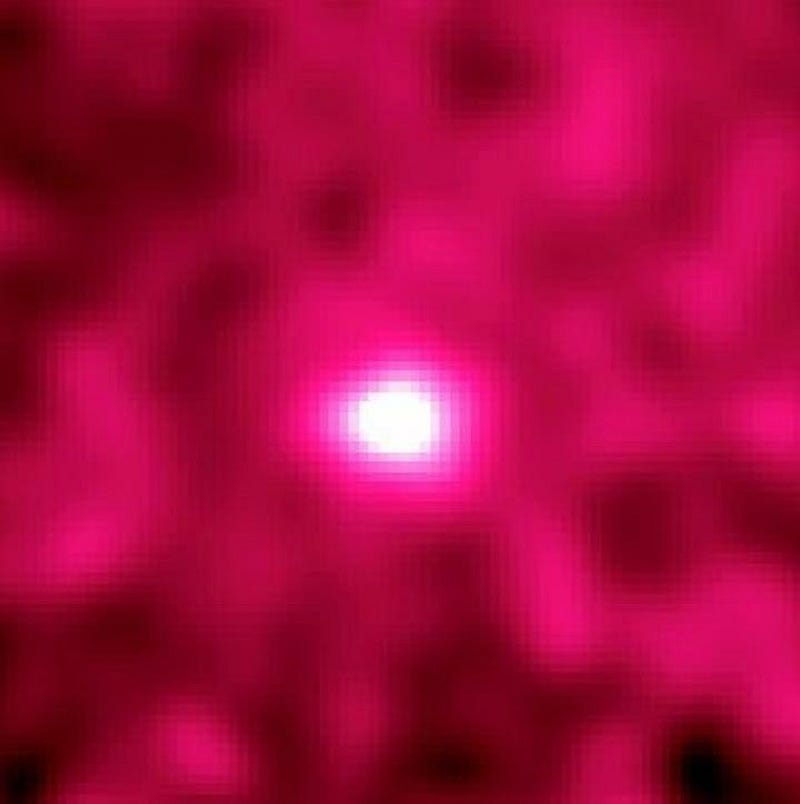
At the highest energies, the Compton observatory was the first of NASA’s great observatories to end its mission. But not before teaching us about the high-energy Universe as never before, including being the first observatory to find a wavelength (gamma-rays) where the Moon outshines the Sun! It’s actually been superseded by a large mission — NASA’s Fermi telescope — that’s improved on its capabilities greatly.
At slightly lower energies, NASA’s Chandra X-ray observatory is still operational, currently celebrating its 20th anniversary in space. It’s revealed views of galactic jets, pulsar cores, and hot gas arising from colliding clusters of galaxies as never before. Its resolution is incredible, and has revealed unprecedented numbers of supermassive black holes. But with a small aperture, a very narrow field-of-view, and limited energy resolution, it has severe fundamental limitations.
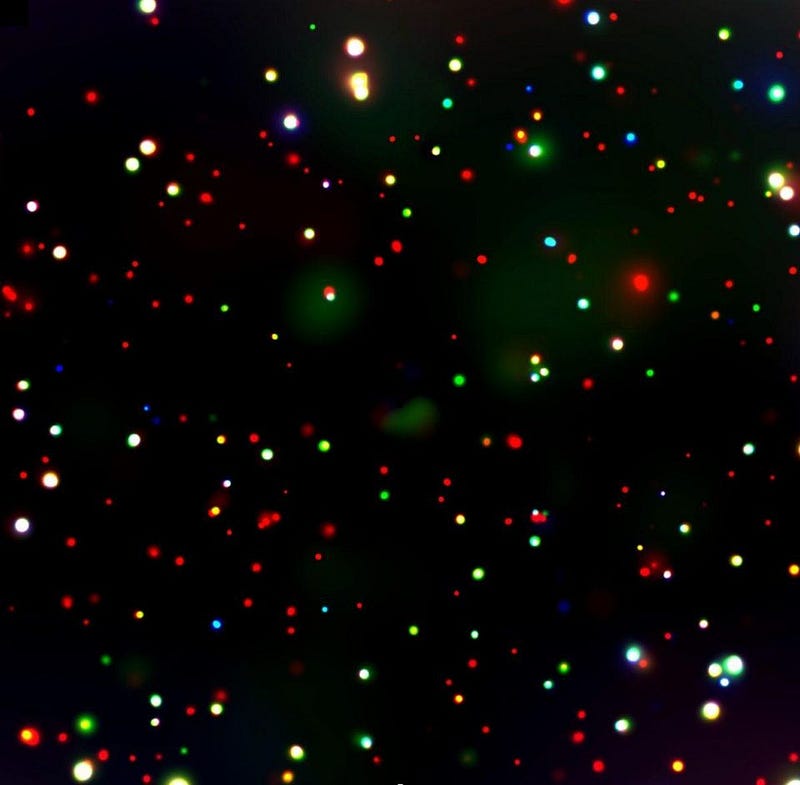
And at longer wavelengths, NASA’s Spitzer Space Telescope was the last of the original great observatories to launch. Cool astrophysical sources that don’t radiate in visible light will still give off infrared radiation, most of which cannot be viewed here on Earth at all due to our atmosphere. But thanks to a combination of passive and active cooling, Spitzer was able to observe the Universe in wavelengths we couldn’t probe at all from Earth. It was retired earlier this year, having given us unprecedented views of our galactic plane as well as the most distant galaxies of all.
The big question — for NASA astrophysics, and for science in general — is what comes next? Will we continue to push these cosmic frontiers, advancing our understanding of the Universe, of the matter in it, of how it interacts, behaves, and evolves in the extreme conditions of the Universe?

Many of the missions regarding our near-term future have already been decided. To explore the near-infrared and mid-infrared, NASA’s James Webb Space Telescope will launch next year. It will be capable of seeing the deep, distant Universe that neither Hubble nor Spitzer could reveal. It will have sharper resolution and greater light-gathering power than either. But it’s a narrow-field telescope that’s optimized only for specific wavelengths.
For wide-field views, NASA’s proposed WFIRST mission and the European Space Agency’s Euclid mission will help map the large-scale structure of the Universe, will measure how galaxies cluster, will find and observe many distant quasars, and many other optical and near-infrared properties of the Universe. But at very long wavelengths, at X-ray energies, and for high-resolution, deep views in the optical or ultraviolet, there are no solid plans.

The closest we have is ESA’s Athena mission, which will be a superior facility to NASA’s Chandra X-ray observatory (and ESA’s current XMM-Newton observatory) in energy resolution, aperture, and field-of-view. But the advances on many of these fronts are modest; this isn’t a “giant leap forward” observatory like each of the original great observatories were. Ideally, we’d have another round of flagship-class missions to extend our knowledge exactly where the biggest gaps are at present.
And that’s why the next few months are so critical. Right now, the National Academy of Sciences is meeting, as they do once per decade, to make their recommendations that will chart the course for the next decade of NASA. The four finalists for the potential flagship missions beyond James Webb and WFIRST have been selected: HabEx, Lynx, Origins and LUVOIR. Each proposal would push our scientific frontiers where they most need to be pushed.

The Habitable Exoplanets Observatory (HabEx): its science goal is straightforward and ambitious, to observe, measure, and characterize Earth-sized planets around Sun-like stars. It will characterize and measure their atmospheric contents, seeking water, oxygen, ozone, and other bio-hints of life. It will be a larger, scaled-up version of Hubble with more light-gathering power, better resolution, and newer instruments: a wonderful general astronomical observatory.
The Lynx X-ray Observatory (Lynx): Lynx is simply a game-changer for X-ray astronomy. Compared to Chandra and even Athena, Lynx will have:
- a superior optical assembly (better resolution, sensitivity, and field-of-view),
- a better calorimeter (to determine the energy of each X-ray photon),
- a high-definition imager (ideal for rapid transient and variable sources),
- and a grating spectrometer (revealing signatures and locations of elements at high-resolution).
It will have 16 times the field-of-view of Chandra, a sensitivity that’s 50-to-100 times greater, and even 10 times the resolution and better spectroscopic power at low-energies than Athena will. It would be a giant leap for X-ray astronomy.
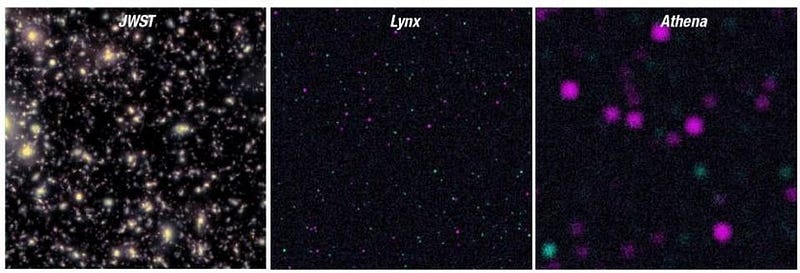
Origins Space Telescope (Origins): This far-infrared observatory would take us where no observatory has ever taken us: into the far-infrared with unprecedented capabilities. Its 5.9-meter mirror and liquid helium (~4 K) temperatures will reveal the Universe with sensitivities more than 1,000 times greater than ESA’s Herschel or NASA’s SOFIA telescopes, and cover ranges that James Webb and ALMA cannot. From growing black holes to planet and star formation to identifying heavy elements and more, Origins will measure what no other proposed observatory can.
The Large Ultraviolet Optical and Infrared telescope (LUVOIR): this is the ultimate dream: a space-based “super-Hubble” with more light-gathering power and higher resolution than anything ever proposed in space. It would be able to measure rotation curves and star-forming region for any galaxy anywhere in the Universe. Direct imaging of exoplanets, geysers and eruptions on Jupiter’s and Saturn’s moons, individual stars in galaxies up to 300 million light-years away, gas maps surrounding every galaxy, etc., all become possible with LUVOIR. It’s the most ambitious observatory ever seriously proposed.
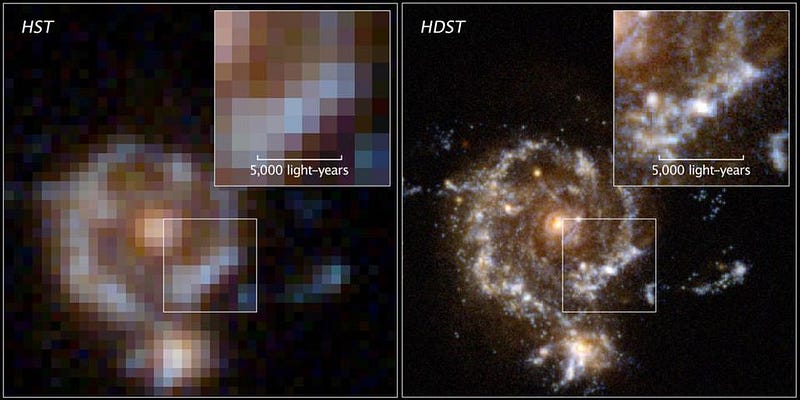
NASA, for some 60 years, has been the pre-eminent space agency in the world. Science, research, development, and discovery all come together, and now is the ideal time to plan our next generation of great observatories. The ideal outcome is that we build all four of them, and continue to not only discover the Universe, but to learn all we can about the cosmos and our place in it. The asking price is the same it’s always been for NASA Astrophysics: ~0.03% of the federal budget.
If we don’t let fear and uncertainty control us, we can peel back the veil of our cosmic ignorance, exploring and discovering what’s out there in the great unknown. We can choose to bravely venture into the grand abyss, and look at the Universe as we never have before. If we’re bold enough, we’ll take a giant leap that truly befits what 21st century science can be. Fundamental science is the basis for every other advance in our society, and we need to invest in it now more than ever.
Ethan Siegel is the author of Beyond the Galaxy and Treknology. You can pre-order his third book, currently in development: the Encyclopaedia Cosmologica.





